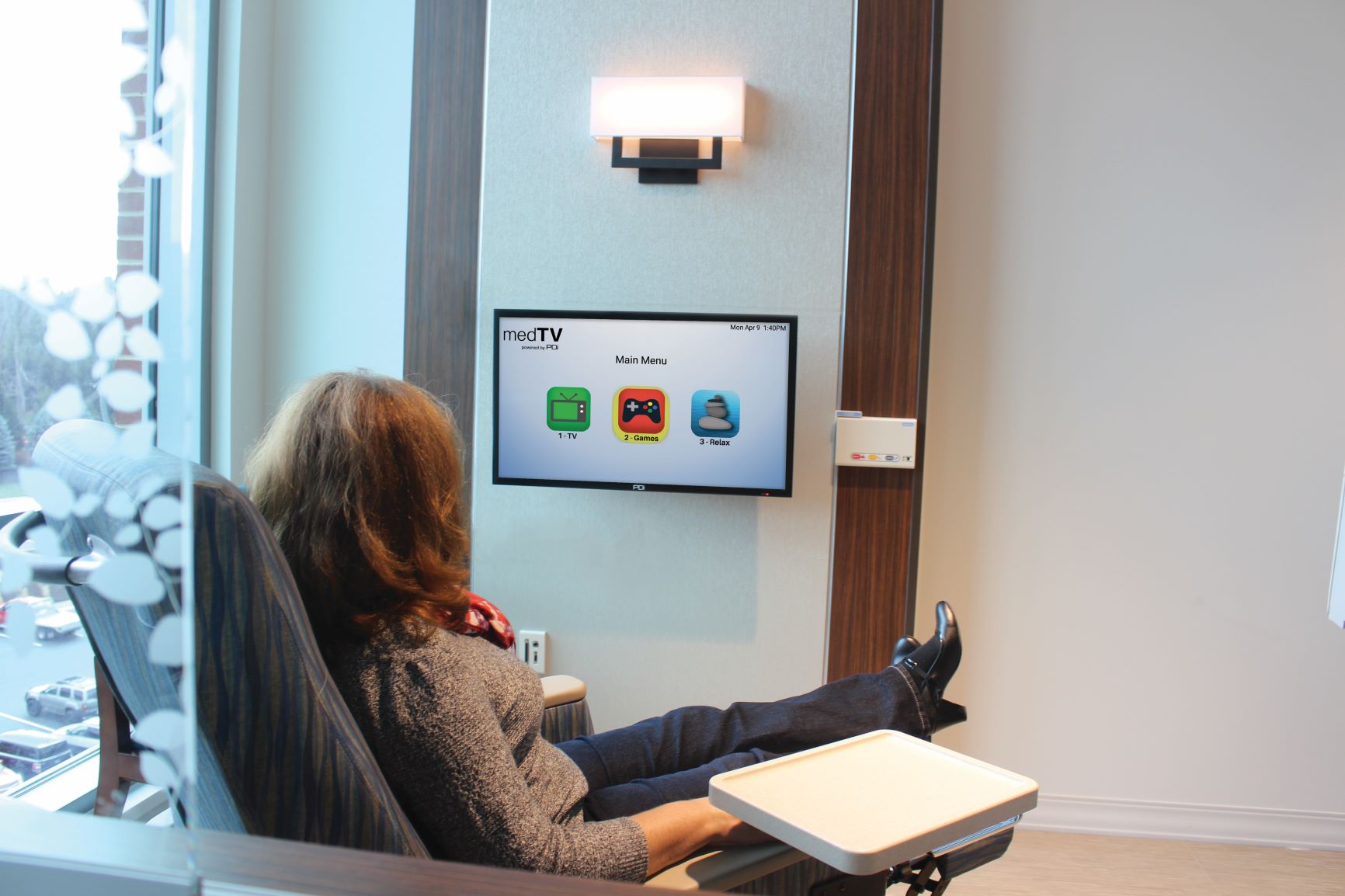5 Strategies to Build a Care Coordination System that Works
Healthcare is very involved. Especially if a patient is very ill or has a chronic condition, there are likely many people involved in their care...
2 min read
 Lynn Schutte
:
September 19, 2019
Lynn Schutte
:
September 19, 2019

Nowadays most people expect to have access to technology at any time. With the prevalence of cell phones, tablets and other devices, we’re constantly connected to some kind of digital distraction.
Healthcare can make this tricky. Many doctors’ offices request that cell phones not be used in the exam room. Some hospital rooms are the same way. There are some places, though, where patients are allowed to use a cell phone, but if they’re in the hospital or receiving some kind of infusion treatment, they’ll likely be there for a while. Eventually staring at the small phone screen will either become frustrating or cause neck pain. Tablets and phones can also be difficult for facilities to keep charged.
In a place like an infusion center, patients typically have a very small amount of personal space, and they’re usually in their chair for hours at a time. While a wall television is a good entertainment option, depending on the type of infusion space, multiple patients could be watching one television - and chances are not everyone will want to watch the same thing. In open areas, this is certainly the case. In semi-open or private rooms, you might not encounter this same issue. Having a wall television, especially one that is shared in a non-private space, can take away from a patient’s feelings of control and independence.
Personal healthcare entertainment technology is a great solution to this problem. Bedside technology brings the entertainment experience to the patient’s fingertips. They can position their television in the most comfortable spot, and they can play games on the touchscreen or browse their favorite social media sites.
With enhanced patient technology, patients can more easily distract themselves and view their entire experience as better. Providing them with personal devices is a great way to improve their satisfaction. You’ll want to find a device that is continuously powered, securely mounted and antimicrobial for patient safety.
Bedside devices include televisions and tablets that can easily be moved to meet each patient’s individual viewing needs. These devices have anywhere from 14 to 19 inch screens, which is actually the equivalent of having a 90 inch wall television across the room. Patients can actually get a better, bigger view with a smaller screen that’s within arm’s reach.
Personal devices also help patients more easily see captions. For people who can’t wear their glasses or contacts due to a procedure or those who simply don’t feel up to it, they don’t have to try to read small print all the way across the room, and personal devices often offer wireless pairing or a headphone jack.
When patients interact with footwall televisions, they often use a pillow speaker, remote or maybe even a wireless keyboard. While all three of these are certainly good options, people are becoming very accustomed to touchscreens. Personal devices provide them with the comfort and familiarity of the touchscreens they use often.
Personal bedside TVs and tablets are often mounted to a support arm either on the wall, ceiling, floor, counter or any other place you could think to mount it. These arms are typically fairly long, though, which doesn’t work well for small infusion-type spaces. A smaller, space saver arm fits the space much better. As the manufacturer, here at PDi we can develop custom solutions for our customers’ needs. We created a space-saving solution for one hospital’s infusion center so patients can easily reach their personal devices.
Spending a lot of time in a small space can easily become boring. Help ease patients’ discomfort and overwhelm by offering them personal entertainment that they can choose. They are in control of the shows they want to watch, games they want to play or sites they want to browse. Providing them this comforting touch of home can improve their experience and the standard of care at your facility.
Call us today to see how we can meet your needs.

Healthcare is very involved. Especially if a patient is very ill or has a chronic condition, there are likely many people involved in their care...

Healthcare experiences can feel overwhelming. Most patients seek comfort. This comfort can come from reassuring actions from the clinical staff, or...

Part 1 - Holidays in Healthcare The holiday season is a time for joy, reflection, and togetherness, but it can also bring unique challenges to...